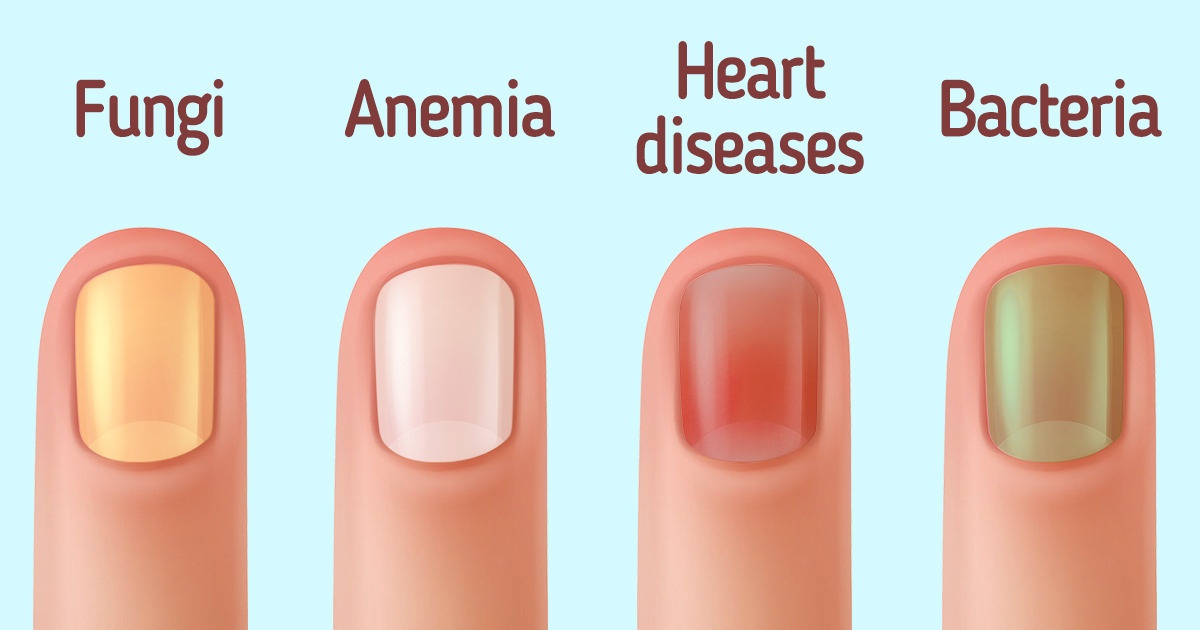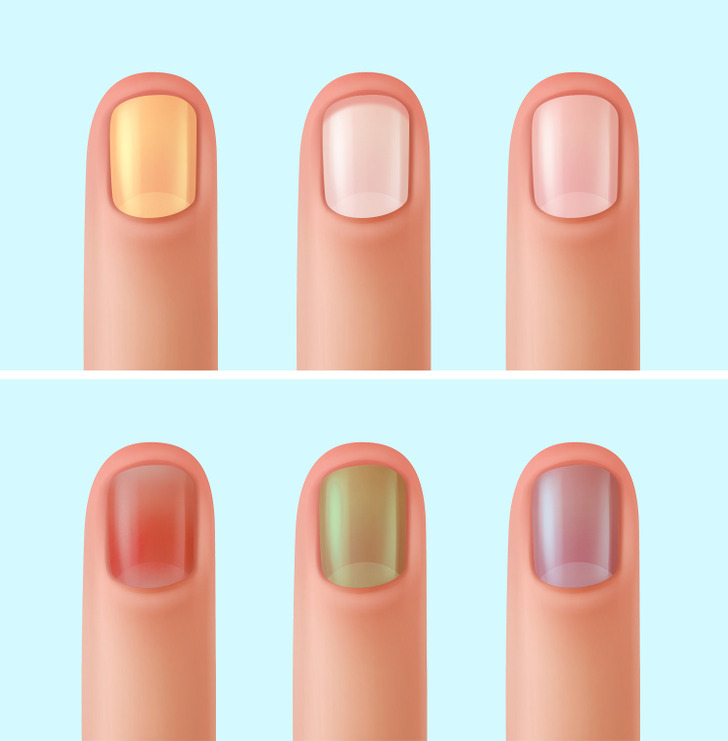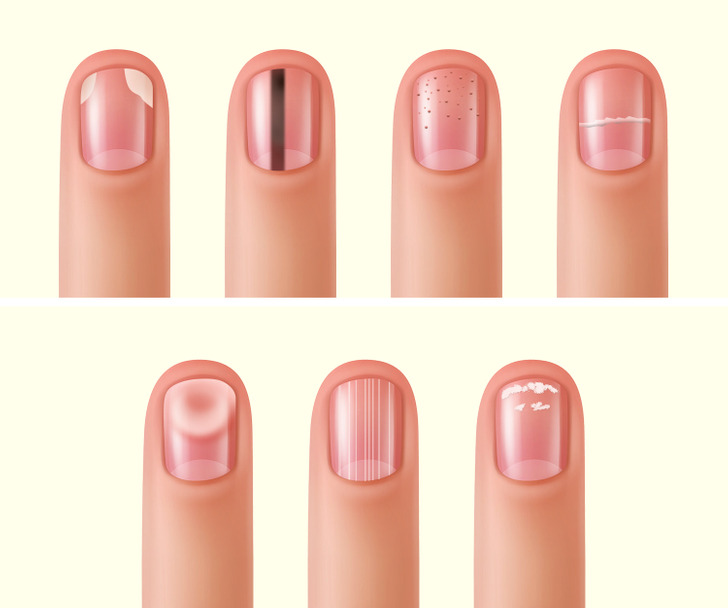What the Color of Your Nails Can Signify

Sometimes details as small as the color of fingernails can say a lot about the condition of the human body. Nail plates that suddenly change shape or color may indicate the need to visit a doctor.
With 5-Minute Crafts, you’ll learn what signals your body might be giving you with the help of the color and structure of your nails.
❗ The article is for informational purposes only and cannot replace the advice of a specialist. If you notice any defects in the nail plate, it is important to consult a doctor who can make an accurate diagnosis and prescribe treatment in a timely manner.
How healthy nails look
As a rule, healthy nails have the following signs:
- Even surfaces without pits or grooves
- A uniformly pink color
- The absence of stains and discolorated areas
- Moon-shaped lunula at the base
Sometimes nails might get white lines and small spots caused by a trauma that should disappear as the nail grows. But not all changes on the nail plate are considered normal. There are the ones that can signal health issues.
Make sure to see a doctor if:
- You notice a significant change in the nail color, including discoloration or dark stripes under the nail plate.
- The nail started to separate from the surrounding skin.
- You see swelling or bleeding around the nail.
- The nail has a strange, non-standard shape.
- The nail started to thicken or become thinner.
- There is a mole that appeared under the nail.
- The nails have become brittle.
❗ Such changes might indicate issues that should be solved as soon as possible.
Nail color
- Yellow nails
Yellow spots under the nails or completely yellow nails can signal a fungal infection. It can also cause nails to become discolored, thickened, and brittle. Although, fungal infection is not the only possible reason behind yellow nails. A similar discoloration can occur in people with lung disease, psoriasis, diabetes, and thyroid dysfunction. People who work with chemical colorants (such as hair dye, for example) can also have yellow nails, or this color can appear as a side effect while taking certain medications. - White matte nails without lunula with a pink stripe on top (Terry’s nails)
It is believed that this change in the nails is associated with a decrease in the blood supply to the nail bed. And this, in turn, can be a sign of liver and kidney disease, diabetes, chronic heart failure, or hyperthyroidism (overactive thyroid gland). - White pale nails
Nails might turn pale if a person has a decreased amount of erythrocytes in the blood (anemia). Also, the whitish color of the nails can indicate a lack of nutrients, as well as heart or liver diseases.
- Red nails
Reddening of nails can indicate heart disease. The reddening of the lunula (whitish half-moons at the nail base) can be a sign of lupus, alopecia areata, or arthritis. - Green nails
The widespread reason for the greenish color in nails is a bacterial infection. The nail can turn green partially or completely. Also, nails can turn green after coming into contact with certain chemical compounds. - Blue nails
Sometimes nails turn bluish due to exposure to cold, but more often, this is due to a lack of oxygen in the blood. The prolonged blue color of the nail can be a sign that indicates problems with the lungs or heart. If the lunula of the nail gets a bluish tint, this may indicate poisoning of the body.
Other changes in nails
- Separation of the nail plate can happen due to nail trauma that occurred during a manicure or pedicure. It may also indicate the presence of a fungal infection, psoriasis, or be a sign of thyroid dysfunction.
- A dark stripe that appears under the nail may indicate malignancy. Finding such a defect requires urgent medical advice.
- Pitted nails can be a sign of diseases like psoriasis, atopic dermatitis, or alopecia areata.
- Horizontal grooves or deep lines on the nail’s surface are called Beau’s lines. They appear due to issues with nail growth, which can be due to severe stress, injury, or illness. If you are concerned about having Beau’s lines on the nails, consult a doctor who will help determine the cause of such a change in the nail plate and prescribe treatment.
- If the edges of your nails start to curve up and the nails begin to resemble a spoon in shape, perhaps your body is missing iron. Oftentimes, a deficiency of this microelement develops with malnutrition as well as issues with the stomach and intestines. Also, spoon-shaped nails can appear with heart and thyroid gland diseases.
- Vertical, slightly convex lines are usually a sign of a natural nail aging or its trauma. With age, people often notice the increase in the number of such stripes on their nails.
- White spots on nails can appear as a reaction to trauma, as an allergic reaction, or as a deficit of zinc, calcium, or protein in the body. In some cases, they can also indicate issues with the liver or kidneys.

